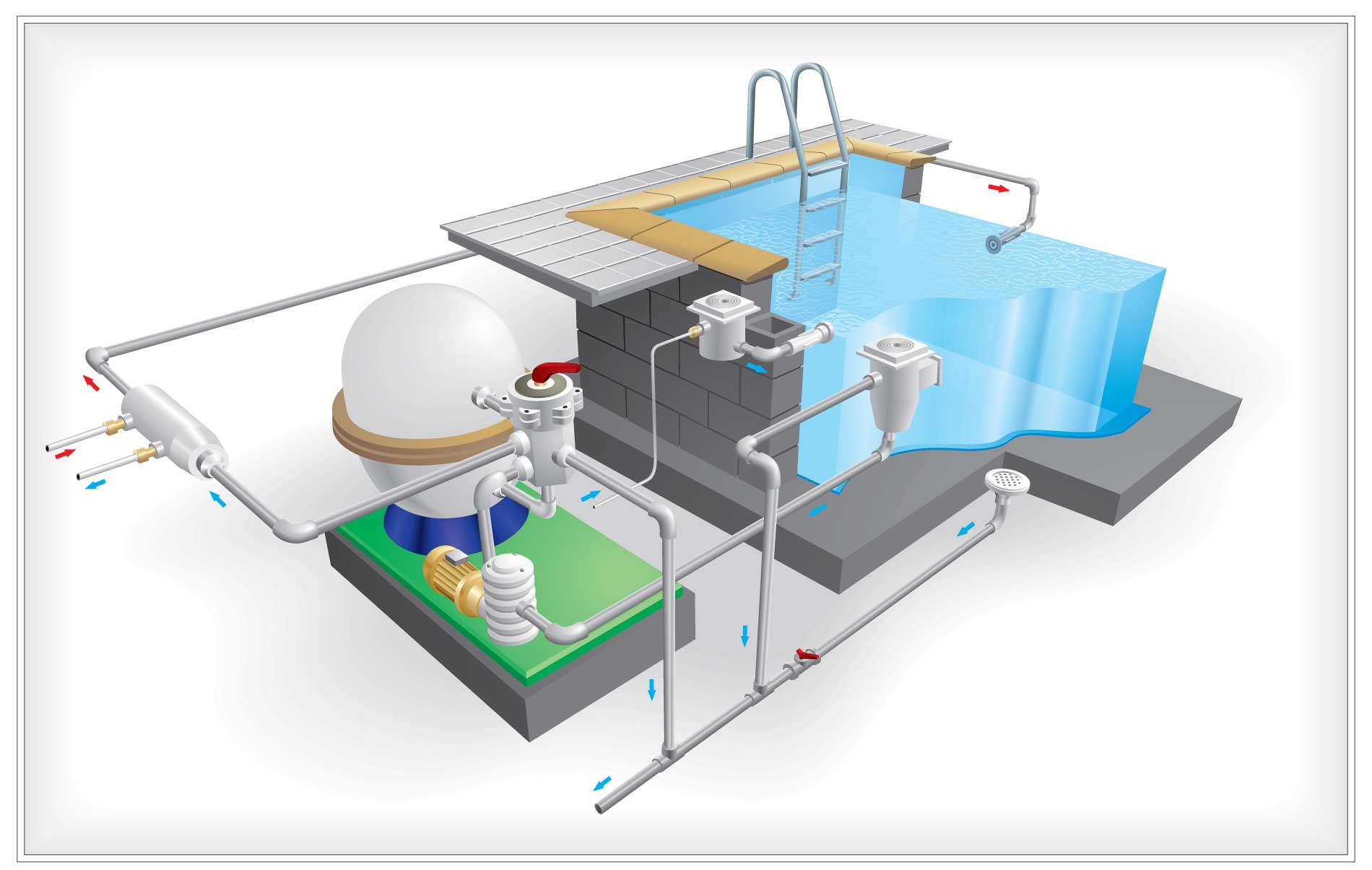How do pool pumps work?
There are three parts that make up the anatomy of pool pumps – the motor, the housing and the impeller. The process starts at the motor. It creates suction that brings water from the pool to the pump. A filter basket within the pump catches any debris before the water enters. Once the water enters the motor, it is pulled into the impeller. Then the water is forced out of the pump through the heater and chlorine receptacle before re-entering the pool.
Types of pumps
There are three popular types of pool pumps: single-speed, dual-speed and variable-speed. Each is suited for a particular category of pools.
- The single-speed pump is ideal for traditional pools and is the most common. This pump runs at a constant speed. It is affordable and cheaper than the others mentioned below. It can be noisy in your backyard.
- Dual-speed, as the name suggests, has two speed options – high and low. What this means is that the pump need not operate at full speed at all times. This helps conserve energy, thereby making it more efficient than the single-speed counterpart. The higher speed may be needed when vacuuming or heating the pool.
- The variable-speed pump is the most efficient of all as these pumps are the most technologically advanced. Variable-speed pumps use permanent magnet motors instead of induction motors. They are also smart; that is digitally controllable. Users can set the desired flow rate at any time and from anywhere. These are durable and quieter pumps than the other two types. Additionally, they run cooler and vibrate less.

What size of the pump is best for your pool?
The pool professionals at Deckside Pools consider many factors such as pool filter size, water turnover rate, available plumbing area, spa jet and even water feature requirements. Just use the right numbers, and you will get the most reliable answer.

